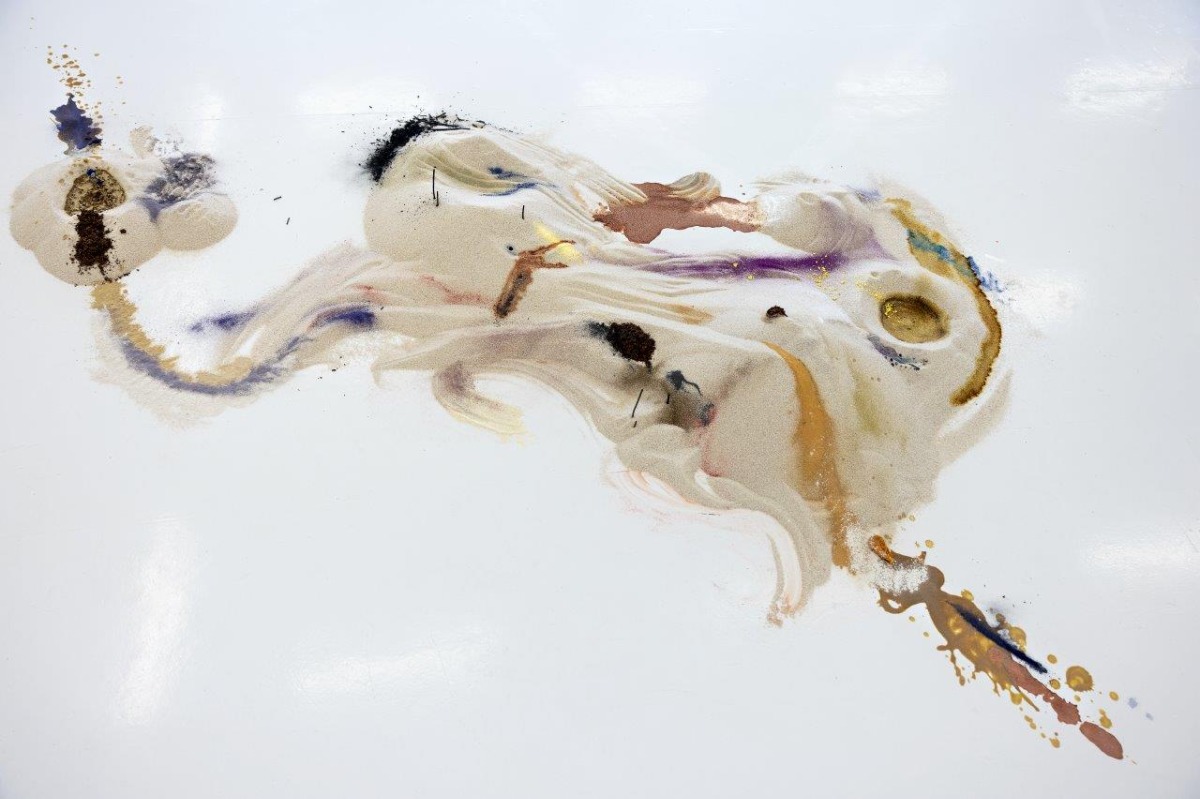
A crescent and a sickle
Bec Gallo
Review of the “The Moon Bends Back” exhibition at SIC in Helsinki
“Expanded painting” comes to mind as I wander through The Moon Bends Back at SIC, although I don’t usually think much about the term. I take in pigment pooled on the floor, draped over translucent walls, and embedded in sculptural relief. But expanded painting is kind of a dry term – something that sounds like it was dreamed up in a university art department to corral increasingly unwieldy practices into a bureaucratically legible major. And, the works here aren’t dry or academic.
Photos: SIC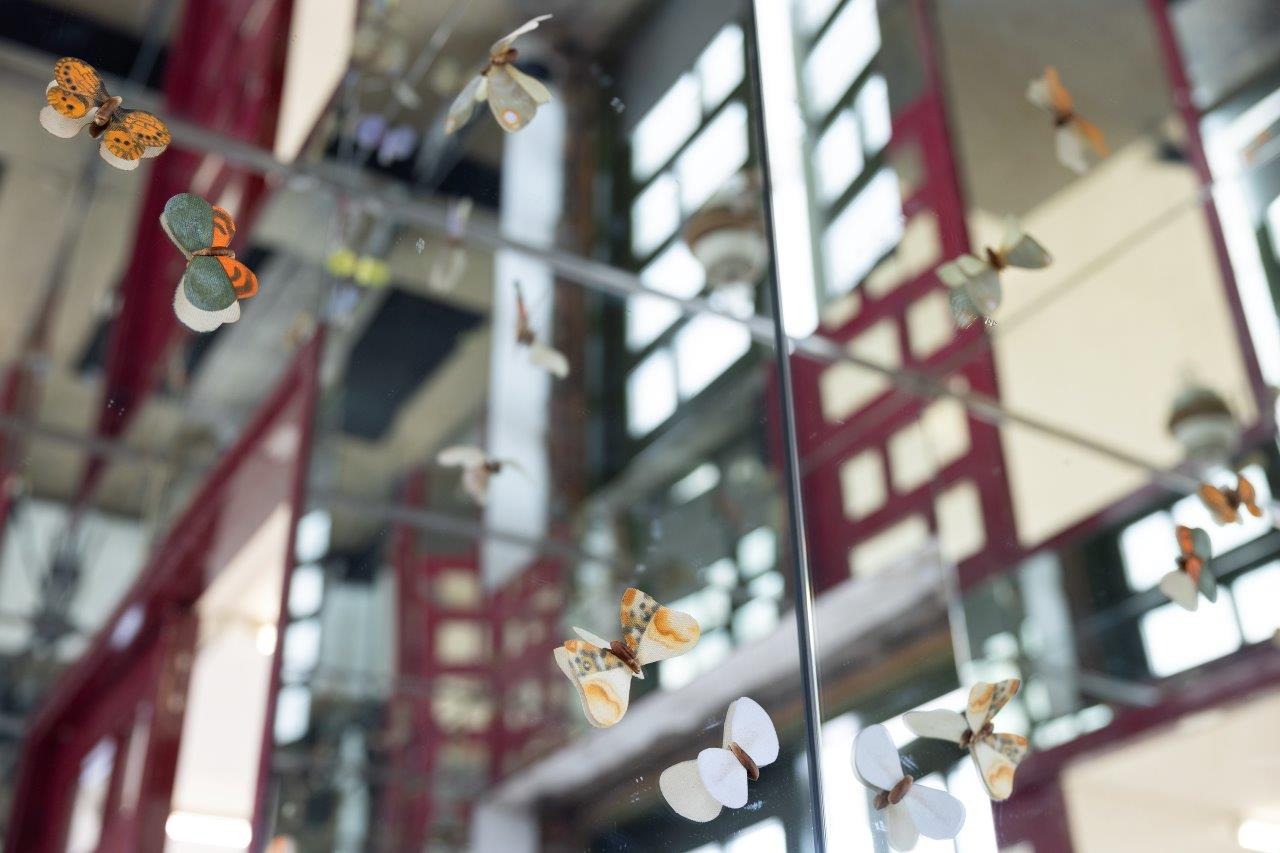

Ieva Putniņa’s paintings are hallucinatory, primordial, swampy vignettes. Figures from fables, folklore, and fairytales are brought together in dream-like landscapes to tell strange, overlapping stories. In Good morning, excised noses topped with luxurious manes of hair examine their reflections, Narcissus-like. If looking down your nose at something is to think you’re better than it, then what does it mean to peer into the reflection of your own nostrils? To be at once the disparaging and the disparaged. A bird cries out from a bare branch over the body of a merperson draped over a rock, dead or resting amidst shells and sprouting yellow blooms. There is life and decay, all of it surrounded by swamps: the earthy soups from which things rise and return.


Victor Gogly’s Bodies, eggs is an abstracted field of yellows, browns, and greys held within a welded steel frame. Silhouettes of animals and eggs are connected by flowing threads and underpinned by soft architectural forms. Exoskeleton Dust City is a loose, sparse diagram drawn onto the wall with graphite. It seems to map connections between insects, humans, and environments; it feels subterranean and sci-fi, but more as a low-resolution thought-cloud than a definitive statement.
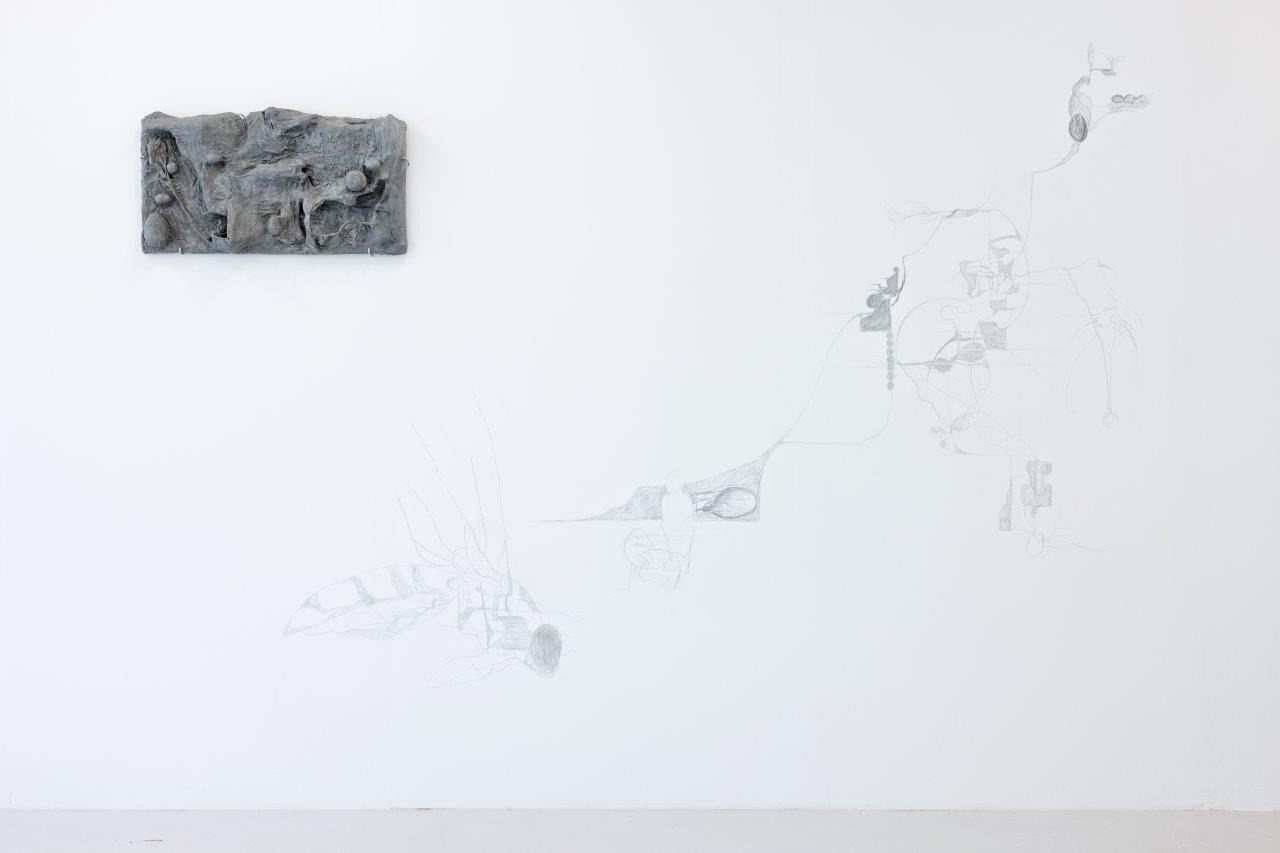
In The Line series by Elīna Vītola, paintings remain mostly coiled in on themselves, snail-like, hinting at what they contain. They are stewing, fermenting, and self-reflecting. They become sculptural, both as coiled circles and as strips draped loosely, almost casually over one of the diaphanous temporary walls. They’re like streamers or flags, celebrations or heralds bearing the colours of the earth.
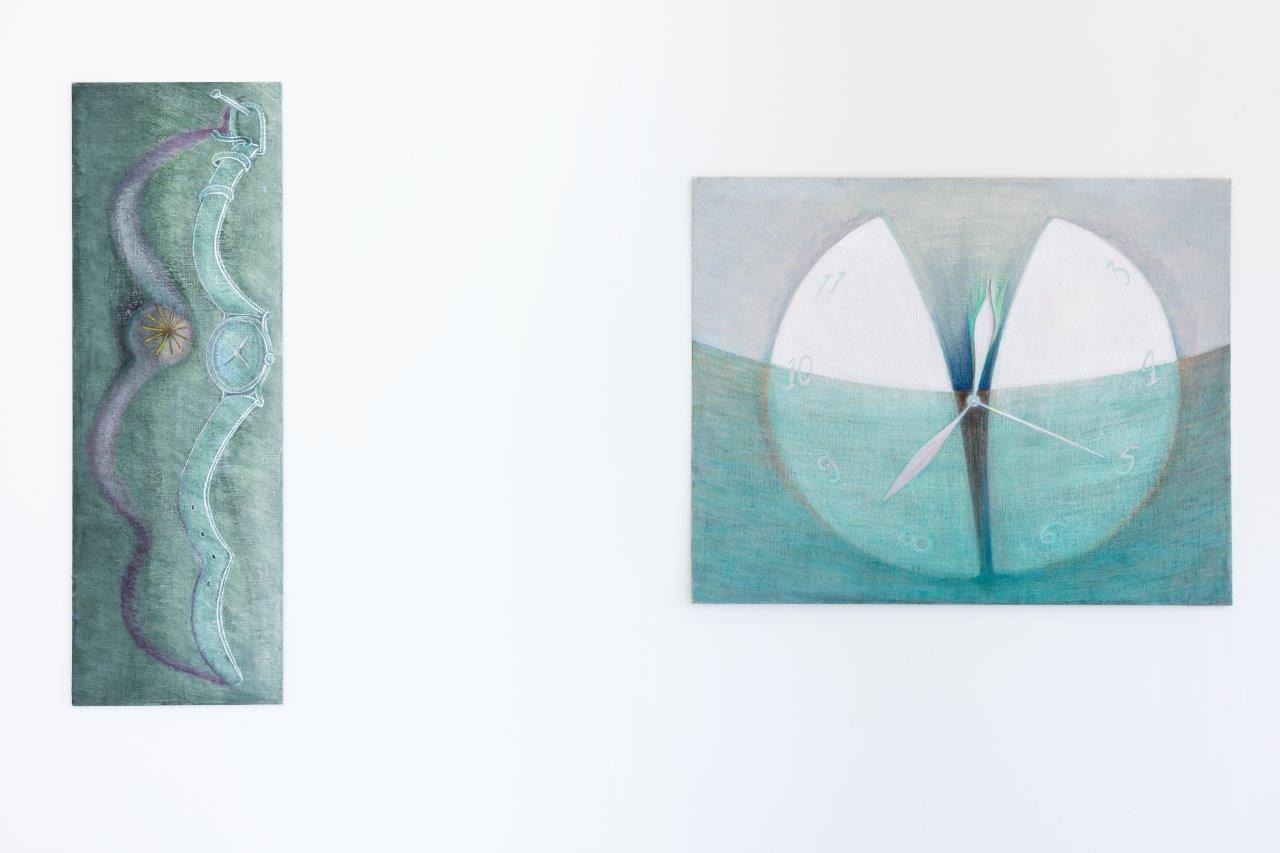
In Pamela Brandt’s Sjunkandetid / Time Sinking, a clock is a ship cleaved in two, engulfed by waves. Its clock-arms are propellers that seem to be ticking ineffectually; when you're sinking, time is just a bleak countdown to a grim inevitability, so what does it matter? Skuggtid / Shadow time depicts a watch nailed to the wall. Its shadow becomes a sundial, a doubling that renders them both useless. What do we do when the systems we’ve set up fail? When devices for measuring time no longer serve that purpose, what might they become?

A collaborative work by Putniņa and Vītola along with curators Inga Meldere and Aino Lintunen, Symbioscene, has been created in-situ on the gallery floor, and feels like an anchoring device. Pigment is streaked, swiped, and dripped onto a landscape of sand. The list of materials is a paragraph of plant names and geographical reference points, suggesting that this gestural abstraction is also an index of gathering, distilling, sifting, and refining. The work feels caught between looseness and spontaneity – it’s a bit careful, a bit cautious, a bit polite. As if in a new collaboration, no one wanted to push it too far.
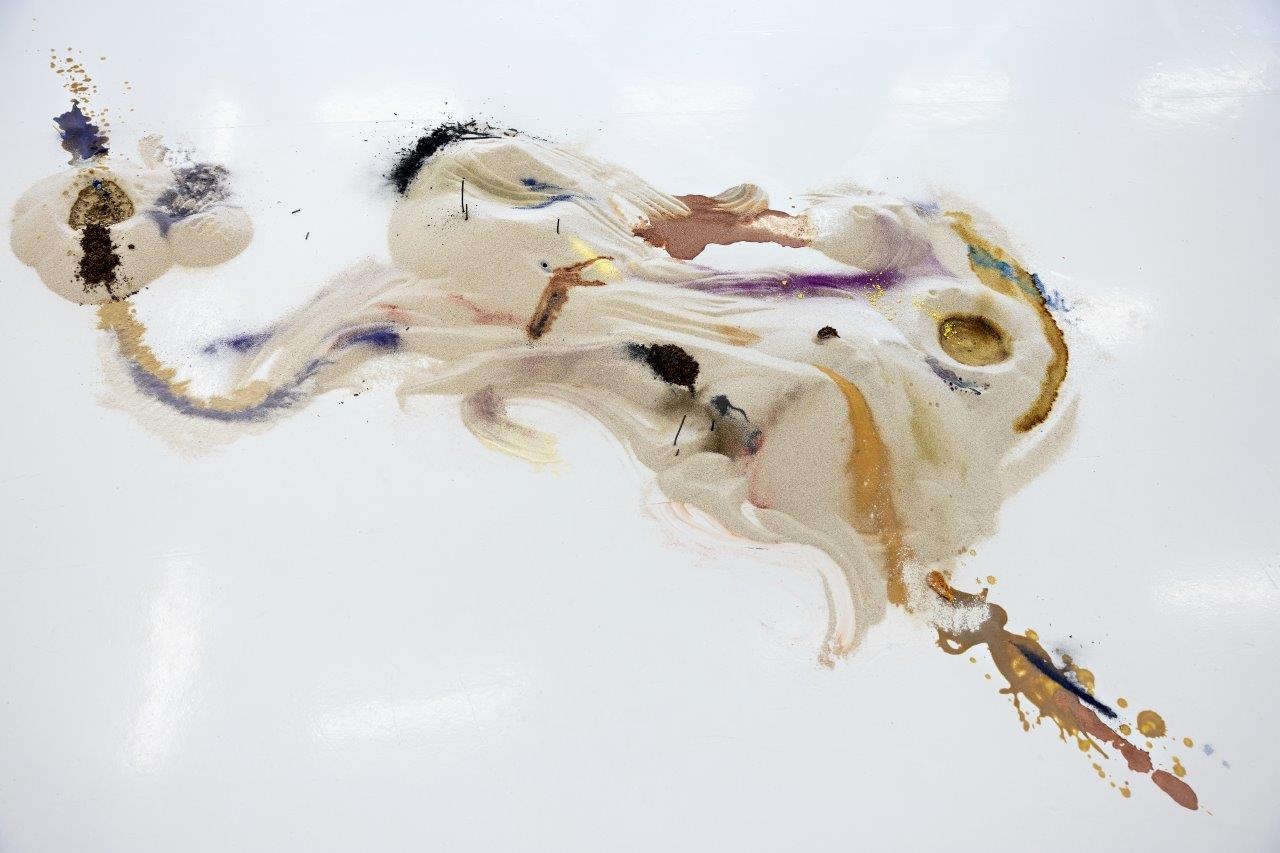

The exhibition space is bright and open. Even the temporary walls are translucent, their timber strut bones clad with a translucent fabric skin instead of ubiquitous drywall. There is a light touch to a lot of the works here, and things aren’t overworked. This lightness can read as poetic restraint, or at times, unfulfilled potential. There are also gorgeous moments that submit to the messy possibilities, to twists and turns, dark corners, and decay.
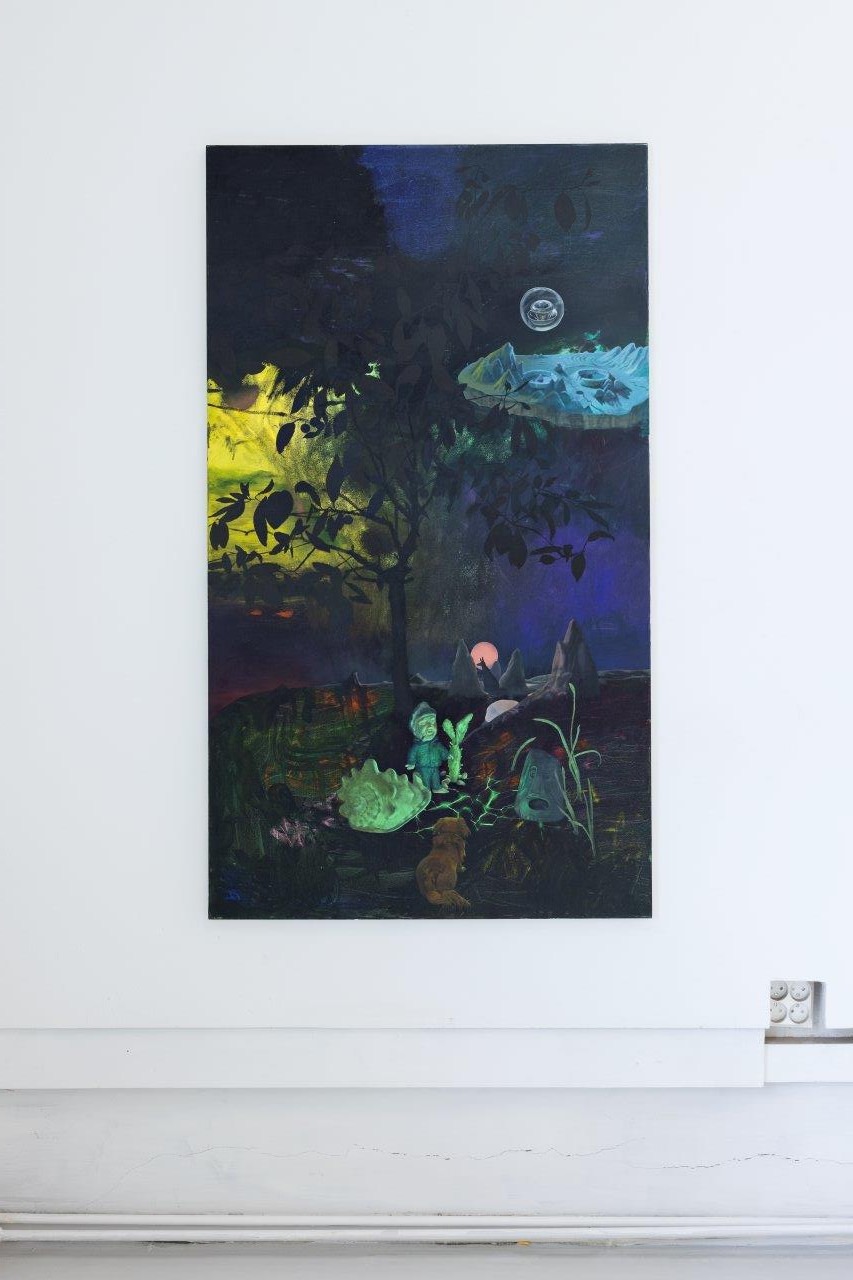
The exhibition’s titular image of a moon bending back conjures a crescent moon for me. I can’t imagine a circle or a sphere bending, but a crescent – yes, that could curve and coil around itself. The crescent moon is a symbol of alchemy, and it’s also the sickle. It’s labour and collectivism, but also mysticism and divinity. Labour is solid, you know its edges, a body working on a task. But the labour of painting is also the alchemy of transforming materials. Somewhere along the way, the clarity of industry slips into the mystery of transformation. There’s always something in the process you can’t quite grasp.

I learn that ‘the moon bends back’ is a line from a poem, Blue Palestine by American poet Ariana Reines, and I read it too fast so I have to go back again and drink it in, and I conjure the exhibition in my mind as I do, and then the line One blue shard of pale Palestine sticks in me like the sharp end of a crescent or a sickle, a shiv or shard. This poem was written in 2012 but I’m reading it now in 2024, after six months of horror, when aerial images of Gaza look like barren moonscapes, and I read the poem again; I swim through it. Parts are smooth and gliding, others run dark and deep.
Here’s an excerpt:
The jagged cheek of Gibraltar Solid, sucked in the mouth and never melting Where my dog’s warm underleg soothes the whetstone I speak of it thusly I say it thusly I lisp its name into the curl of wall stained dark in the impression of my mouth
Only one grass whistles out the tooth of my horse And the moon bends back And the wheat lolls back And opens its stomach
And waits for death

Reines mashes together soft flesh and hard mineral; sturdy, fibrous resistance and the messy innards of things. There are moments of this tension in the exhibition – in the skeletal walls, welded metal framing softness, the witchy darkness of paintings. And I want more of it, more bone and rock, metal and mess. But there’s also something to be said for the air and light between things – for the dog’s warm underleg, the curl of wall – this softness that allows things to breathe, and to settle.
The Moon Bends Back SIC, Helsinki
16.3. – 21.4.2024
Elina Vitola, Victor Gogly, Pamela Brandt, Ieva Putniņa Curated by Inga Meldere & Aino Lintunen
Curated by Inga Meldere & Aino Lintunen